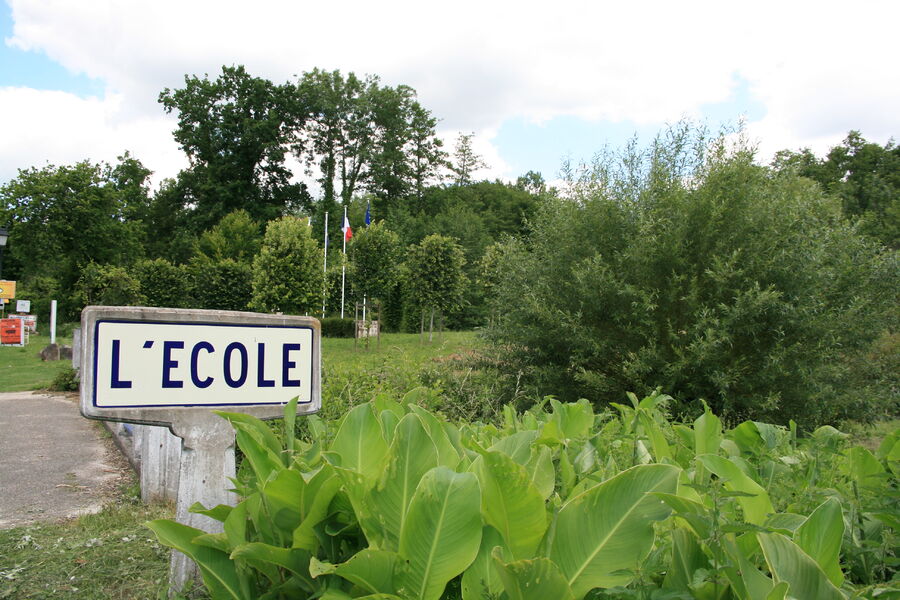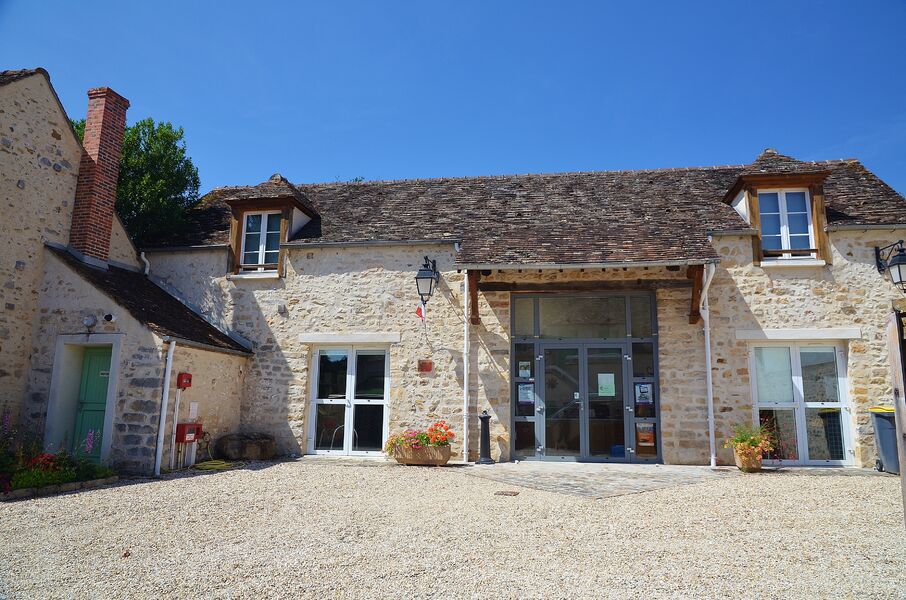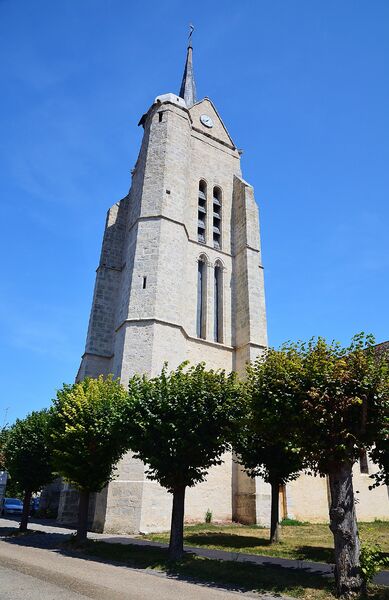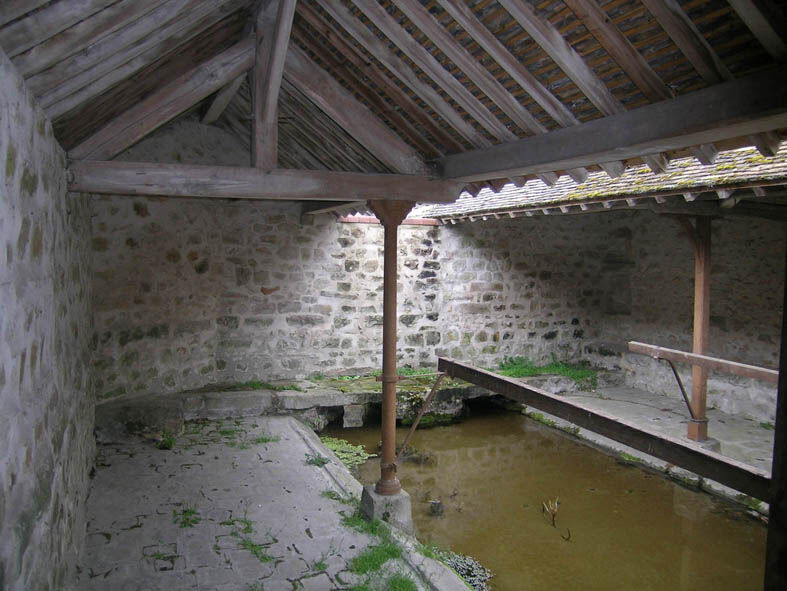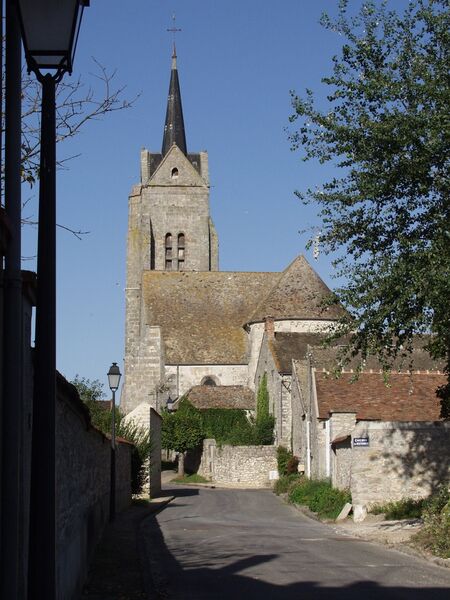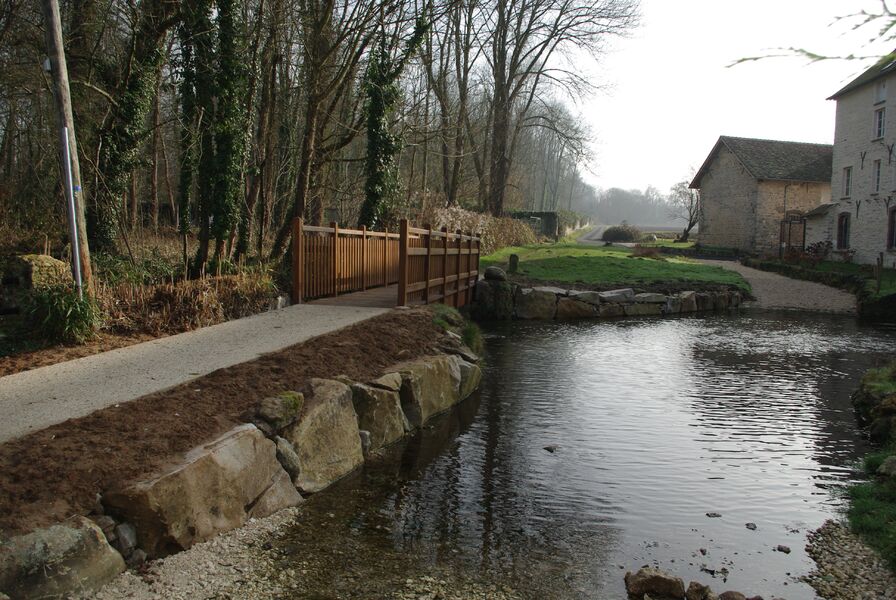Moigny sur Ecole
Moigny-sur-École
Patrimoine culturel
Moigny-sur-École is located in the green École Valley. This peaceful village is perfect for hiking and resting. Furthermore, its numerous classified natural treasures are a real paradise for biodiversity.
-------------
HISTORY
Moigny already had human presence back in the Neolithic era. Indeed, some traces from the past were found such as the rock polisher de la Roche Grénolée and several caves with prehistoric engraving.
Numerous vestiges from the Gallo-Roman era were also found in the village such as wells and a Roman road. The name of the village could have been given at the time. Several possibilities were explored : Moigny could come from the Gallic chief Monius, or from the Gallic word of “Monios” (which means traveler) or from the Latin word of “moniacum” (which means monk).
It was mostly during the Middle Age that the village flourished a lot. Indeed, the clergy was so powerful here that Moigny even became a place for monastic elections. The village was at the time split into three seigneuries : Cochet, Launay and Fort Château. This last one was a castle mound. We can still see nowadays some vestiges of the castle not far from the church which was surely built later than the castle. Fort Château is such an important symbol for the village that it is even represented on the village’s coat of arms. The castle was mostly destroyed during the Hundred Years War. Concerning Launay, a chapel dedicated to Sainte-Anne was attended by lepers. It was installed in a fortified farm that we can still see.
-------------
HERITAGE
The Church of Saint-Denis
The church of Moigny-sur-École was built during the first Gothic age, that is during the 12th century. However, a few traces of Roman art were found near the altar. The church was severely damaged during the Hundred Years War which led to a redesign of the church at the end of the 15th century. The bell tower was rebuilt during the 16th century.
The different parts composing the church have various architectural styles and the inside is full of nice decorations such as a mural fresco representing Virgin Mary’s education by Sainte-Anne. The apse’s cornice is adorned with a frieze, it is an example of a very unusual style in the Gâtinais. It is probably one of the oldest parts of the church.
The church and numerous of its furnitures (the bell, some statues and a painting of pilgrims of Emmaus) were classified as part of the Monuments Historiques in 1926. The sainted glass windows are of contemporary style.
++++
The Wells
Moigny has always been a village that exploits water at its highest because of its geographical situation along the École River. We can find several wells in the village from different periods. Some are private well, others are public. The brightest example of well is located Place du Puits and has an impressive typical style from the Gâtinais.
++++
The Fording Site
The fording site is a small bridge connecting Moigny-sur-École to Courances and which is crossing the École River. It was recently renovated and also helps to join le Moulin Grenat (a mill). The property could have been occupied by Templars during the 13th century. The mill was then burnt during the Hundred Years War and rebuilt later.
++++
The Wash-House of Saint-Denis
It was built in 1866 in place of a fountain that was named Saint-Denis too. It was helping inhabitants to have easier access to wash their laundry. The wash-house also had an unmanaged trough next to it for the cattle’s drinking. The wash-house was restored recently and is as pretty as it was when it was built.
++++
The Wash-House of Saint-Roch
This wash-house was also built in 1866. It is situated in the spring of Saint-Roch. It is composed of a three-panel roof and was also restored recently.
++++
The Moulin Grenat (mill)
This part of the village has been occupied by humans since the Gallo-Roman era. Its name of Moulin Grenat could come from “Grannos”, the Celtic god of springs. Numerous vestiges were found around the mill such as the first stone placed for its building. The stone even has a Celtic inscription on it. Indeed, the mill could have been occupied by Templars during the 13th century before it was burnt during the Hundred Years War. It was King Charles V who ordered the rebuilding of the mill. The legend goes that Joan of Arc stayed a night in Moulin Grenat in 1430.
++++
The Moulin Gauffin (mill)
The Moulin Gauffin, contrary to most mills in the area, was not placed along the École River. Indeed, this mill was built during the 17th century and was powered by three different water springs. We can still see nowadays its wheel and its pulley that were used to climb the bags of grain to the attic.
++++
The Cave au Violon
This cave is hidden in a forest surrounding Moigny. This cave is a reminder to how rich the history of the village is and that it is one of the numerous vestiges from the Prehistoric era the village has. This cave was named “au violon” because of one of the engraving that was found : it looks like a violin. Its authenticity is undeniable but why a violin when this instrument was invented centuries after ? Well, in fact, the most logical explanation is that the violin shape was used at the time to represent women.
++++
The Slipping Rock du Gros Mahaux
A slipping rock is a natural or Megalithic rock, mostly inclined. An old tradition was that women who wished to have a kid had to slide down the rock, with naked buttock. This fecondity’s ritual was so important and common that some slipping rocks ended up being polished by the increasing number of women sliding down the rock. The slipping rock du Gros Mahaux was even sabotaged between the two world wars to limit this activity. It is one of the last slipping rocks we can still see in France nowadays.
++++
The Sandstone Quarries
Since Antiquity, sandstone has always been a construction material of choice. But it was during the 19th century that the sandstone quarries in the Massif de Fontainebleau reached their peak of reputation. Indeed, sandstone was used a lot to make the pavements we can still see nowadays in the streets of Paris. Even if sandstone is way less used today, Moigny-sur-École is proud to shelter the last artisanal sandstone quarry still in operation in the region. Thanks to its know-how, those last years, the quarry produced numerous pieces made of sandstone for important French monuments such as the Château de Versailles.
++++
The Roche Grénolée
The Roche Grénolée is a polisher that was used during the Neolithic era to polish weapons made of stone and is located in the wood called Bois de Tartibois. It was classified in 1973 as part of the Monuments Historiques. This polisher is 1,70 meters long and 1,10 meters wide and has 13 parallel streaks on it.
++++
SOURCE: Mairie de Moigny-sur-École, t4t35.fr, Corpus Étampois, “L’écriture Préhistorique” de Georges Lasserre, Les Amis de Milly-en-Gâtinais et Environs, Parc Naturel Régional du Gâtinais Français
HISTORY
Moigny already had human presence back in the Neolithic era. Indeed, some traces from the past were found such as the rock polisher de la Roche Grénolée and several caves with prehistoric engraving.
Numerous vestiges from the Gallo-Roman era were also found in the village such as wells and a Roman road. The name of the village could have been given at the time. Several possibilities were explored : Moigny could come from the Gallic chief Monius, or from the Gallic word of “Monios” (which means traveler) or from the Latin word of “moniacum” (which means monk).
It was mostly during the Middle Age that the village flourished a lot. Indeed, the clergy was so powerful here that Moigny even became a place for monastic elections. The village was at the time split into three seigneuries : Cochet, Launay and Fort Château. This last one was a castle mound. We can still see nowadays some vestiges of the castle not far from the church which was surely built later than the castle. Fort Château is such an important symbol for the village that it is even represented on the village’s coat of arms. The castle was mostly destroyed during the Hundred Years War. Concerning Launay, a chapel dedicated to Sainte-Anne was attended by lepers. It was installed in a fortified farm that we can still see.
-------------
HERITAGE
The Church of Saint-Denis
The church of Moigny-sur-École was built during the first Gothic age, that is during the 12th century. However, a few traces of Roman art were found near the altar. The church was severely damaged during the Hundred Years War which led to a redesign of the church at the end of the 15th century. The bell tower was rebuilt during the 16th century.
The different parts composing the church have various architectural styles and the inside is full of nice decorations such as a mural fresco representing Virgin Mary’s education by Sainte-Anne. The apse’s cornice is adorned with a frieze, it is an example of a very unusual style in the Gâtinais. It is probably one of the oldest parts of the church.
The church and numerous of its furnitures (the bell, some statues and a painting of pilgrims of Emmaus) were classified as part of the Monuments Historiques in 1926. The sainted glass windows are of contemporary style.
++++
The Wells
Moigny has always been a village that exploits water at its highest because of its geographical situation along the École River. We can find several wells in the village from different periods. Some are private well, others are public. The brightest example of well is located Place du Puits and has an impressive typical style from the Gâtinais.
++++
The Fording Site
The fording site is a small bridge connecting Moigny-sur-École to Courances and which is crossing the École River. It was recently renovated and also helps to join le Moulin Grenat (a mill). The property could have been occupied by Templars during the 13th century. The mill was then burnt during the Hundred Years War and rebuilt later.
++++
The Wash-House of Saint-Denis
It was built in 1866 in place of a fountain that was named Saint-Denis too. It was helping inhabitants to have easier access to wash their laundry. The wash-house also had an unmanaged trough next to it for the cattle’s drinking. The wash-house was restored recently and is as pretty as it was when it was built.
++++
The Wash-House of Saint-Roch
This wash-house was also built in 1866. It is situated in the spring of Saint-Roch. It is composed of a three-panel roof and was also restored recently.
++++
The Moulin Grenat (mill)
This part of the village has been occupied by humans since the Gallo-Roman era. Its name of Moulin Grenat could come from “Grannos”, the Celtic god of springs. Numerous vestiges were found around the mill such as the first stone placed for its building. The stone even has a Celtic inscription on it. Indeed, the mill could have been occupied by Templars during the 13th century before it was burnt during the Hundred Years War. It was King Charles V who ordered the rebuilding of the mill. The legend goes that Joan of Arc stayed a night in Moulin Grenat in 1430.
++++
The Moulin Gauffin (mill)
The Moulin Gauffin, contrary to most mills in the area, was not placed along the École River. Indeed, this mill was built during the 17th century and was powered by three different water springs. We can still see nowadays its wheel and its pulley that were used to climb the bags of grain to the attic.
++++
The Cave au Violon
This cave is hidden in a forest surrounding Moigny. This cave is a reminder to how rich the history of the village is and that it is one of the numerous vestiges from the Prehistoric era the village has. This cave was named “au violon” because of one of the engraving that was found : it looks like a violin. Its authenticity is undeniable but why a violin when this instrument was invented centuries after ? Well, in fact, the most logical explanation is that the violin shape was used at the time to represent women.
++++
The Slipping Rock du Gros Mahaux
A slipping rock is a natural or Megalithic rock, mostly inclined. An old tradition was that women who wished to have a kid had to slide down the rock, with naked buttock. This fecondity’s ritual was so important and common that some slipping rocks ended up being polished by the increasing number of women sliding down the rock. The slipping rock du Gros Mahaux was even sabotaged between the two world wars to limit this activity. It is one of the last slipping rocks we can still see in France nowadays.
++++
The Sandstone Quarries
Since Antiquity, sandstone has always been a construction material of choice. But it was during the 19th century that the sandstone quarries in the Massif de Fontainebleau reached their peak of reputation. Indeed, sandstone was used a lot to make the pavements we can still see nowadays in the streets of Paris. Even if sandstone is way less used today, Moigny-sur-École is proud to shelter the last artisanal sandstone quarry still in operation in the region. Thanks to its know-how, those last years, the quarry produced numerous pieces made of sandstone for important French monuments such as the Château de Versailles.
++++
The Roche Grénolée
The Roche Grénolée is a polisher that was used during the Neolithic era to polish weapons made of stone and is located in the wood called Bois de Tartibois. It was classified in 1973 as part of the Monuments Historiques. This polisher is 1,70 meters long and 1,10 meters wide and has 13 parallel streaks on it.
++++
SOURCE: Mairie de Moigny-sur-École, t4t35.fr, Corpus Étampois, “L’écriture Préhistorique” de Georges Lasserre, Les Amis de Milly-en-Gâtinais et Environs, Parc Naturel Régional du Gâtinais Français
Prestations, conforts et services
- French


